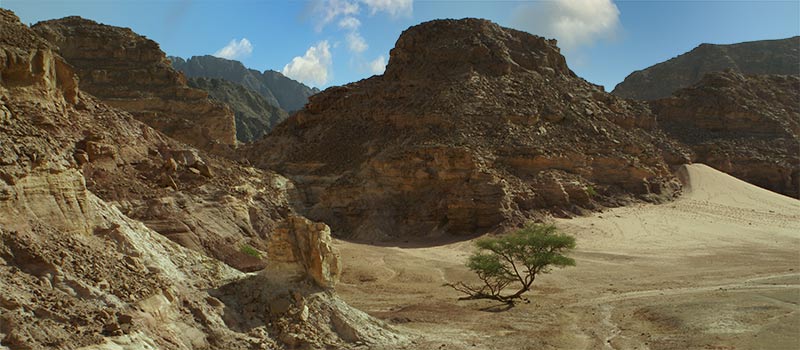Ras Mohamed
Ras Mohamed National Park, one of the most famous of Egypt’s natural protectorates, is located at the tip of the Sinai Peninsula, approximately 20 km west of Sharm al-Sheikh. Ras Mohamed (the head of Mohamed), named by locals because of a cliff inside the area that resembles a man’s profile, is renowned for its 8-km-long coral reef, unique marine and terrestrial wildlife, and unforgettable diving sites. A thriving mangrove forest, walls of coral reefs, sea caves, and unmatched marine inhabitants make Ras Mohamed a diving paradise. The meticulous conservation and preservation of Ras Mohamed’s rich, warm waters create a safe haven for hundreds of marine life species, such as the giant moray eel, clownfish, sea turtle, manta ray, hammerhead, and whale sharks.
Nabq Protectorate
The exceptional wilderness of the Nabq National Park along the Red Sea will amaze visitors. Spanning over 600 sq km, Nabq is the largest coastal protectorate in Egypt and includes terrains that range from mountains to sand dunes to a dense mangrove forest and offshore reefs. The natural spring within Wadi Kid attracts varied wildlife, such as Nubian ibexes, gazelles, and rock hyraxes. Many nesting grounds for osprey, white-eyed gulls, grey herons, the steppe eagle, and spoonbills populate the area, which is also a resting spot for migratory birds. Bedouin communities from the Al Mezina tribe live within the protectorate and are a model for sustainable living.
Abu Galum Protectorate
Any visit to Dahab would not be complete without an excursion to the Abu Galum Protectorate. With internationally renowned dive sites, like the Blue Hole and Three Pools, and unique coral reefs, Abu Galum is a must-see snorkeling and diving site. The stunning array of topography here is unlike any place in Egypt. It includes mountains, valleys, and the stunning Blue Lagoon with its crystal-clear waters and sandy beaches. The picturesque granite mountains within the protectorate also offer plenty of land-based activities, including nature walks, hiking, and safaris. Whether you tour Abu Galum by land or by sea, understanding this protectorate’s colorful and fragile biodiversity will be a rich experience.
St. Catherine’s Protectorate
The mountainous protected area of St. Catherine’s is spiritually, historically, geologically, and biologically significant. The St. Catherine monastery was founded in the 6th century, and it is the oldest continually occupied monastery in the world. It was designated as a UNESCO World Heritage site in 2002. From the monastery’s original gate, the Great Church, the Burning Bush Chapel, and its well-preserved library, visitors can see the dedication and hard work that has been put into safeguarding its relics. The monastery is built at the foot of Mount Sinai, an Abrahamic landmark and the tallest mountain in Egypt. Trips to the top to watch the sunrise or sunset are popular activities. Spiritual pilgrims travel to this spot year-round, but the natural heritage of this high-altitude protectorate is just as important. Here, you can see the world’s smallest butterfly, the Sinai baton blue; the caracal; and striped hyena. Flourishing in this region is the Sinai Wild Rose and the Acacia Tree.
Taba Protectorate
Taba’s designation as a protectorate has been crucial in protecting the wellbeing of its natural heritage. Regarded as one of the most unspoiled regions of South Sinai, Taba’s landscapes include valleys, steep mountains, fresh water springs, caves, and desert passages. The plant and animal make-up is a mixture between mammals, rare birds, reptiles, and plants that are all well-adapted to this regions’ climate and landscape. Visitors will also witness Bedouin culture and explore cultural and archeological sites, including the Nawamis, one of the world’s oldest stone-roofed buildings.


